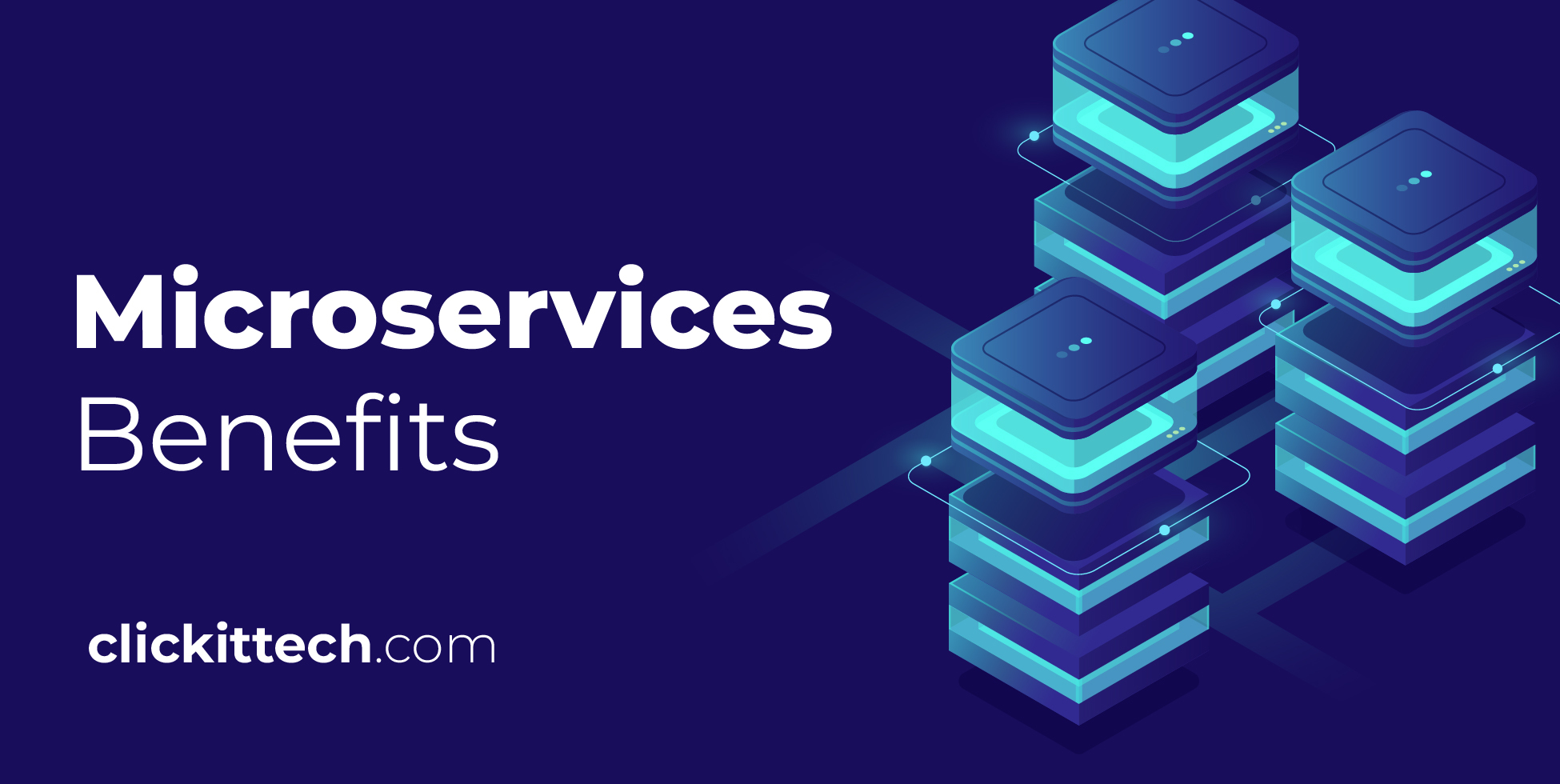In an ideal world for your digital business, software delivery is fast, reliable, and perfectly contributes to your goals. Tech experts are constantly working on finding the right approach to achieve that. And as a result, modern applications are diving into Microservices architecture benefits.
The benefits of microservices give applications the capability of scaling and deploying changes as needed without compromising the availability and security of the system.
In this blog, we’ll talk more about its use cases and best practices. But first, let’s focus on the Microservices Benefits that will transform your platform.
Table of contents
- What are Microservices?
- What are the Microservices Benefits?
- What are the Best Practices in Microservices?
- What are the Microservices Use Cases?
- Microservices Benefits: Did you know?
- Microservices Benefits: Wrapping Up
- Microservices Benefits FAQs
Expecting frequent and considerable growth for an application was a complicated goal with a monolithic architecture, thanks to the interdependence of services.
This is where the Microservices vs Monolith debate became increasingly interesting, and organizations looked more into a modularized infrastructure that allowed quick deployment and easier scalability.
Let’s review what modular architecture refers to exactly.

What are Microservices?
The Microservices approach modularizes applications to focus on small sections of code instead of working on the entire system simultaneously.
Microservices architecture benefits organizations by delivering and managing competitive applications in which modifications and scaling can be flexibly made to each service without affecting the entire infrastructure.
There are situations where Microservices advantages are the clear step to follow. For example, when apps outgrow monolithic architectures, legacy applications that need updating, and platforms with an increasing user demand that need to integrate multiple functionalities.
Migrating your application to Microservices can be quite a challenge. This can be eased by working with skilled professionals who follow a careful process of understanding which functionalities are needed and how services can be modularized. Then, integrate those microservices and take advantage of technologies like Kubernetes to manage them.
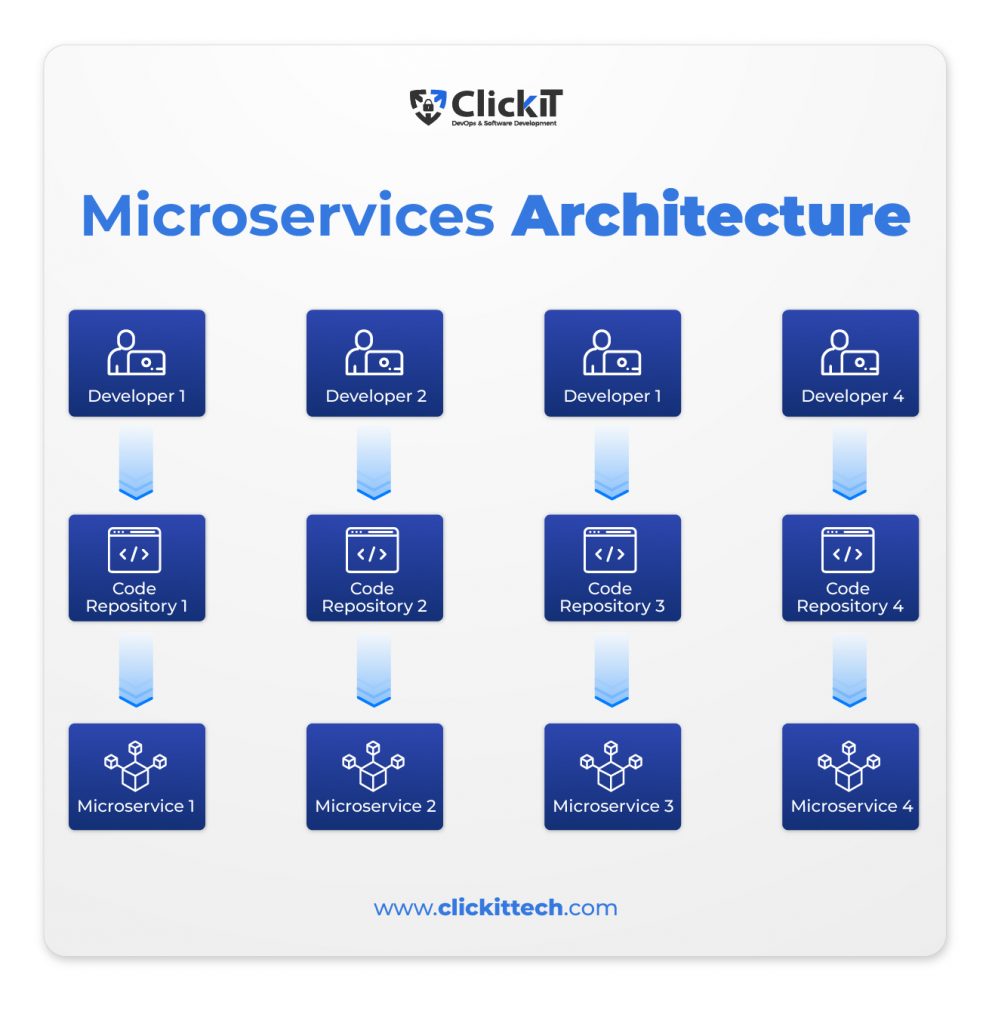
What are the Microservices Benefits?
Software development teams implement the Microservices advantages in complex infrastructures, especially when they need to scale frequently. But the benefits don’t end there, as microservices can benefit even the autonomy that developers feel while creating their projects.
The Microservices architecture benefits impact on a technical and organizational level. So, let’s review their top advantages.
1. Scale with flexibility and independence
Scaling a monolithic architecture comes with many challenges, as it disrupts and compromises the entire system. Microservices run independently. Therefore, each one can be modified to add, remove, and scale features as needed.
Microservices advantages allow flexible scaling of the system by focusing on the part that requires to grow or scale back without disturbing the other microservices. This means that if demand increases, the whole application can maintain availability while you get the right infrastructure size and services. And also keep that availability if it needs to scale down again.
Another benefit of scaling microservices is only using the resources you need. So costs can be reduced and measured more accurately.
Microservices are containerized and loosely coupled. Tools like Kubernetes can help with scaling tasks by provisioning resources to the service that needs it. If traffic increases, it can move them to the service that requires them and then remove those resources when traffic decreases again or when they are needed in another microservice.
If your company expects fast and considerable growth, Microservices advantages can provide the right and cost-effective solution.
2. Faster deployment, faster time-to-market.
As part of the long list of Microservices advantages, this architecture aligns with Continuous Integration and Continuous Delivery practices by accelerating the process of updating and changing the code.
By making changes to only a small part of the application, you get the flexibility to quickly experiment with code modifications. Changes can be made and reverted without affecting availability. Each microservice can be developed, tested, deployed, and updated independently. Which allows a faster code delivery and, consequently, faster time-to-market.
Microservices and CI/CD tools are two important trends streahttps://www.clickittech.com/devops/ci-cd-tools/mlining the software development life cycle. And, therefore, will impact the future of DevOps.
3. Technology-agnostic approach
Which are your favorite tools, programming languages, and environments to work with? When you’re building Microservices architectures, you get the freedom of choosing the resources you consider the best for each specific project.
This tech-agnostic approach adapts well to teams with different skill sets and resources. Developers working on different services can solve precise problems with their ideal tech stack and improve microservices interoperability.
Certainly, this also contributes greatly to the team’s productivity and satisfaction. As this technological freedom gives them more autonomy and flexibility to work with the best-suited tools in which they are more proficient.
4. Code manageability
Streamlined software development is a priority for organizations. So, automating activities and building tools that can be reused have become part of current tech and DevOps trends.
Modularizing applications also means that development teams can reuse code for other tasks and purposes. For example, if you require authentication features for several services, you can create a dedicated authentication microservice. Other microservices can reuse this code instead of duplicating it, and the dedicated service will perform the necessary authentication checks.
This practice of using features for multiple purposes promotes code consistency and reduces efforts without compromising quality and functionality.
Implementing new tasks by reusing code also makes it easy to roll back any changes without disturbing the whole application, and releasing features becomes faster.
5. Fault isolation
A common challenge in monolithic architectures is cascading failures. When a component fails, the whole application is affected. Microservices benefits facilitate fixing failures because they affect only one microservice and not the entire system.
This doesn’t mean that microservices handling a great amount of traffic won’t present complications. But it will be easier to deal with them because the error will be more isolated.
6. Security and Compliance
Communication and interoperability between microservices are necessary for the application to work properly. But this connection doesn’t mean sensitive data in microservices applications isn’t protected.
On the contrary, the system breaks into smaller components, and teams working on certain parts of the application don’t necessarily have access to the sensitive data in others.
Healthcare and financial organizations can significantly benefit from microservices advantages because this isolation and security in each part of the system protects the information that users trust them with. And this also helps them comply with regulations like HIPAA and PCI DSS.
This granular approach to security implements measures to a service level instead of storing private data in a single monolithic application. Security in microservices is accomplished through APIs that connect the services but ensure access to only authorized users.
7. Agility and productivity
The list of microservices benefits isn’t complete without talking about an essential principle of DevOps: Agility.
Working with modularized applications increases agile collaboration because teams can work faster and release results in less time without compromising quality.
Developers work with independence by focusing on smaller components and ensuring the use of proper tools and functions. They are motivated to take ownership of their activities and be more productive.
Microservices promote a modern approach to software development, allowing teams to take advantage of cutting-edge technologies while incorporating flexible and independent collaboration models like outsourcing. This cultural advantage translates into cost savings and team satisfaction.
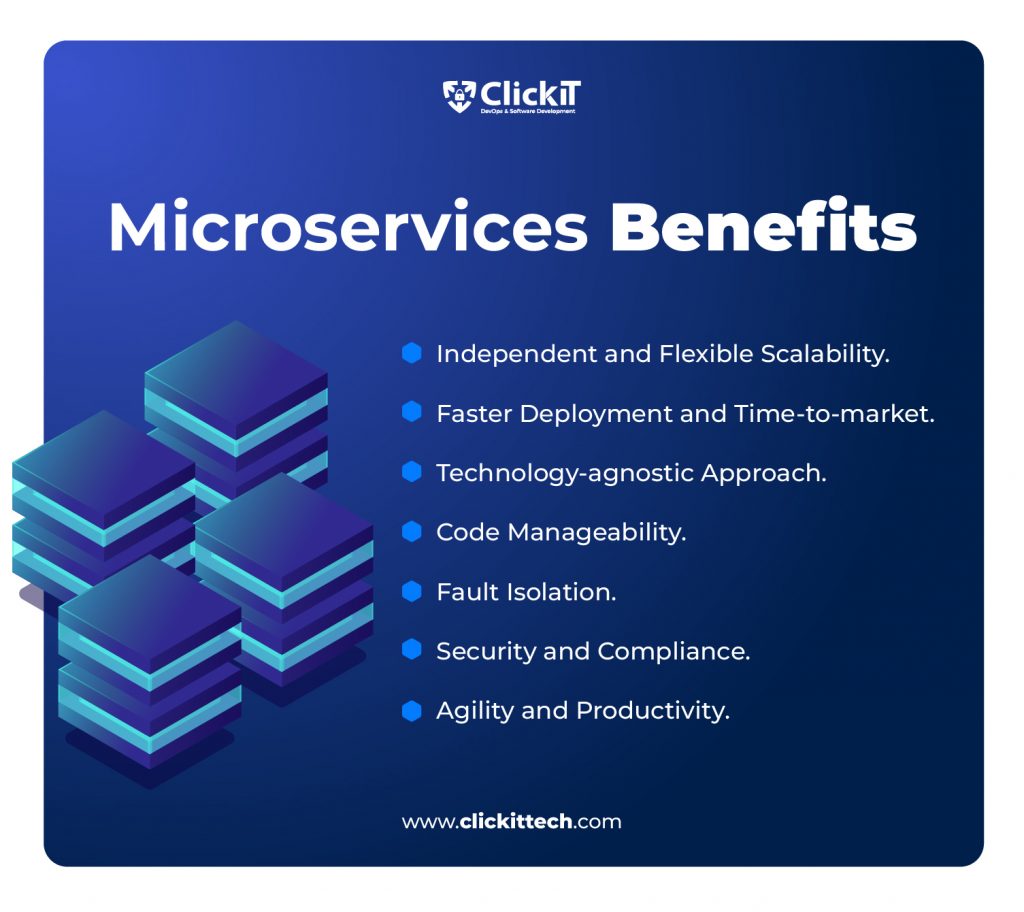
Now, how can teams ensure that they are taking the most out of the Microservices Architecture benefits? By incorporating the best practices to build the right infrastructures, including separating data storage, giving limited responsibilities to each microservice, and incorporating an asynchronous communication system.
What are the Best Practices in Microservices?
1. Apply the Single Responsibility Principle
Delegating responsibilities is essential for a team to succeed because assigning too many tasks to someone increases the possibility of errors. The same happens with microservices.
Limiting one functionality per microservice helps them remain small, easy to update, and maintainable.
2. Separate Data Storage
To fully adopt the microservices architecture benefits, each microservice should assign a private database for each one to strengthen its independence, flexibility, and security while also reducing the impact if one database becomes unavailable.
If several microservices do not need to share the same database, the best practice is to maintain data separated.
3. Follow Continuous Integration and Continuous Deployment practices
Making Microservices continuously deployed ensures faster time-to-market and allows teams to implement automation.
This can reduce errors and accelerate the process of updating changes, fixes, and improvements without affecting other microservices.
4. Use a Container Orchestration Platform
Packaging and deploying microservices is a best practice for managing them across different environments.
The top platform for this task is clearly Kubernetes, as it allows you to manage provisioning, load balancing, scaling, deployment, and other responsibilities of your containers.
If you’re not convinced with this tool, check out these Kubernetes alternatives.
5. Ensure monitoring and observability
In DevOps practices, observability and monitoring are key. Especially when you’re working with microservices to create architectures that are expected to grow exponentially. As your services scale, the best practice is to be able to oversee if each service is available and working properly.
Logging mechanisms, metric collecting tools, automated testing, health checks, and performance monitoring are a few monitoring practices you can implement to get the best of the microservices architecture benefits.
6. Leverage a Loosely Coupled Architecture
Loose coupling follows the independent nature that the microservices benefits provide. Incorporating this architecture means that each service has little to no dependency on other services and eases the development, deployment, and scaling processes.
Click here to learn more about the Loosely Coupled Architecture.
7. Implement Asynchronous Communication
Synchronous Communication is possible in microservices, but it can create dependency. In this, one system makes a request to another and waits for a response before proceeding with the action. The issue here is, for example, if a payment service requests an inventory service and this one isn’t available, the payment service won’t be able to take the required action until it receives a response.
Asynchronous communication fixes this by implementing an event-driven architecture in which an event occurs and releases a message. If that event impacts other microservices, they can subscribe to the message queue to get alerted. This improves collaboration between microservices and maintains its independence.
Overall, as you can see from the above, the best practices for microservices are directed to encourage independence for dev teams while ensuring the whole application is protected from any possible failures thanks to its fault isolation and resilience.
You’ll also get the most of the Microservices benefits by incorporating an API design. These help with the communication between services, their integration, and the access one service could need to another service’s data.
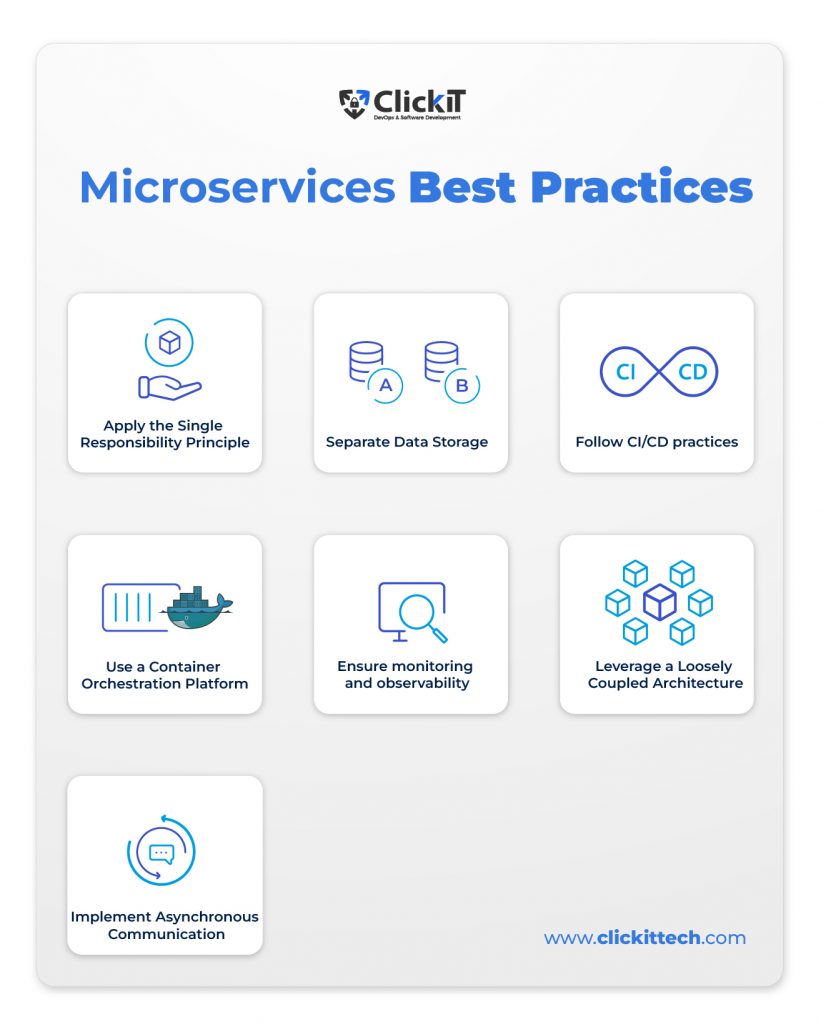
What are the Microservices Use Cases?
Are the Microservices benefits suitable for every type of application? It will significantly depend on the specifications and type of project. Microservices are ideal for complex applications and platforms that could expect massive growth, like fintech applications or streaming platforms.
Let’s review some use cases where companies can get the most out of Microservices benefits:
- Large-scale applications with complex logic
A Microservice architecture can help complex applications that need to execute different functionalities. In an e-commerce example, these functionalities could be payment processing and order management.
This can relate to the asynchronous communication structure we mentioned before in this blog, where one microservice can perform its task without waiting or affecting another.
EBay is an example of microservices for large-scale complex applications.
- Rapidly growing applications
Microservices benefits can impact platforms that need to scale according to the number of users seamlessly. Widespread applications in which users increase or decrease constantly and in large amounts will need to consider implementing microservices to scale and modify a specific part of the app without affecting the rest.
Example: Netflix and Spotify must quickly and effectively deliver content to millions of users.
- Applications that process large amounts of data
The integration of technology in the Healthcare industry has revolutionized patient care. Microservices benefits are suitable for Healthcare SaaS applications because they can handle large amounts of data without compromising security.
Microservices architecture benefits can limit access to specific services with sensitive information while promoting an organized infrastructure to manage patient data quickly and efficiently.
ClickIT’s team leverages Microservices and Artificial Intelligence to build successful Healthcare applications; check out this video discussing our latest SaaS project.
- Legacy applications
Organizations that want to transform and update their applications can leverage the Microservices benefits. By incorporating cutting-edge technologies without committing to determined resources for all the application services.
- Applications with multiple integrations
Microservices incorporate an API design, so another important use case would be applications that need to integrate with third-party services. This improves flexibility and expands functionality.
A perfect example could be travel and hospitality applications like an online booking platform that integrates with external services. A potential client might visit a blog about hiking, and using microservices can facilitate their access to booking options through third-party integrations.
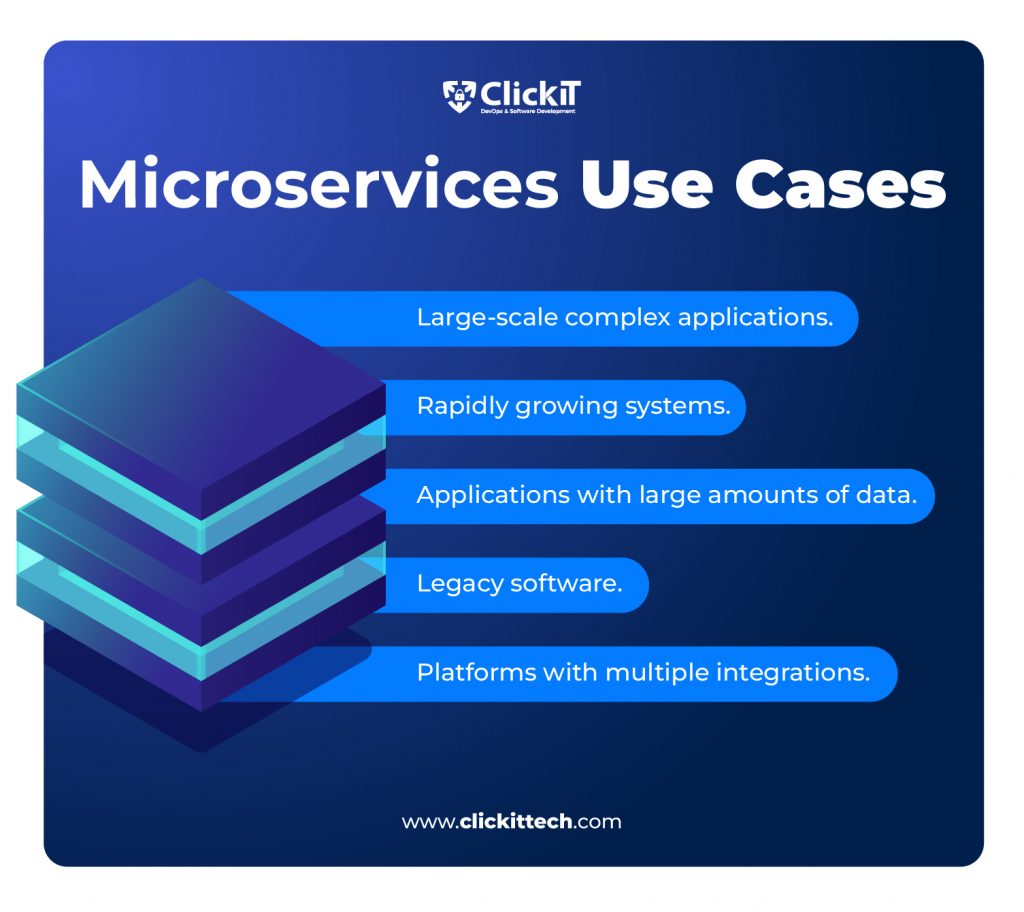
Microservices Benefits: Did you know?
The Microservices advantages cover a whole world of possibilities for reliable, scalable, and flexible applications. Did you know these interesting facts about the Microservices approach?



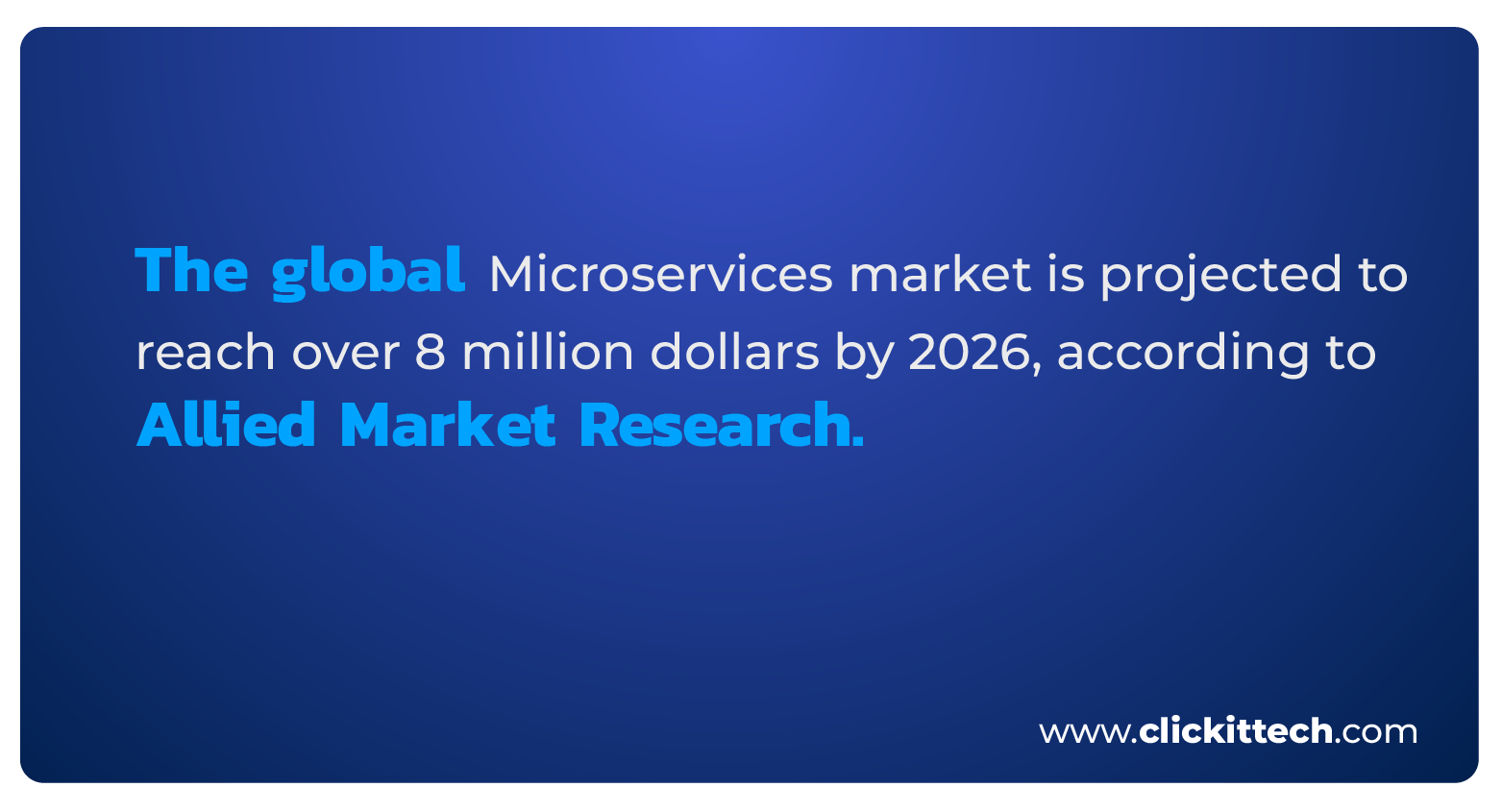
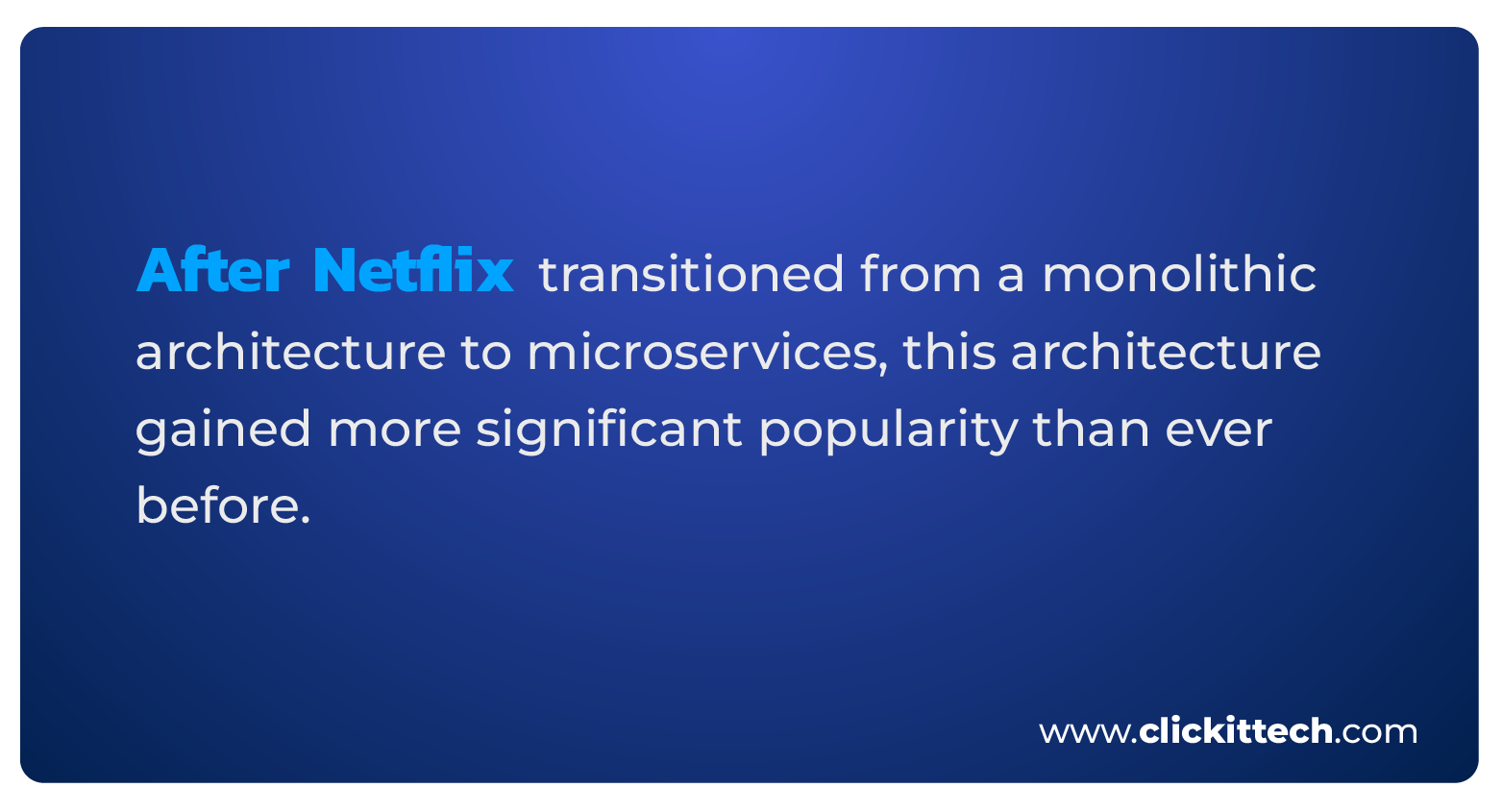
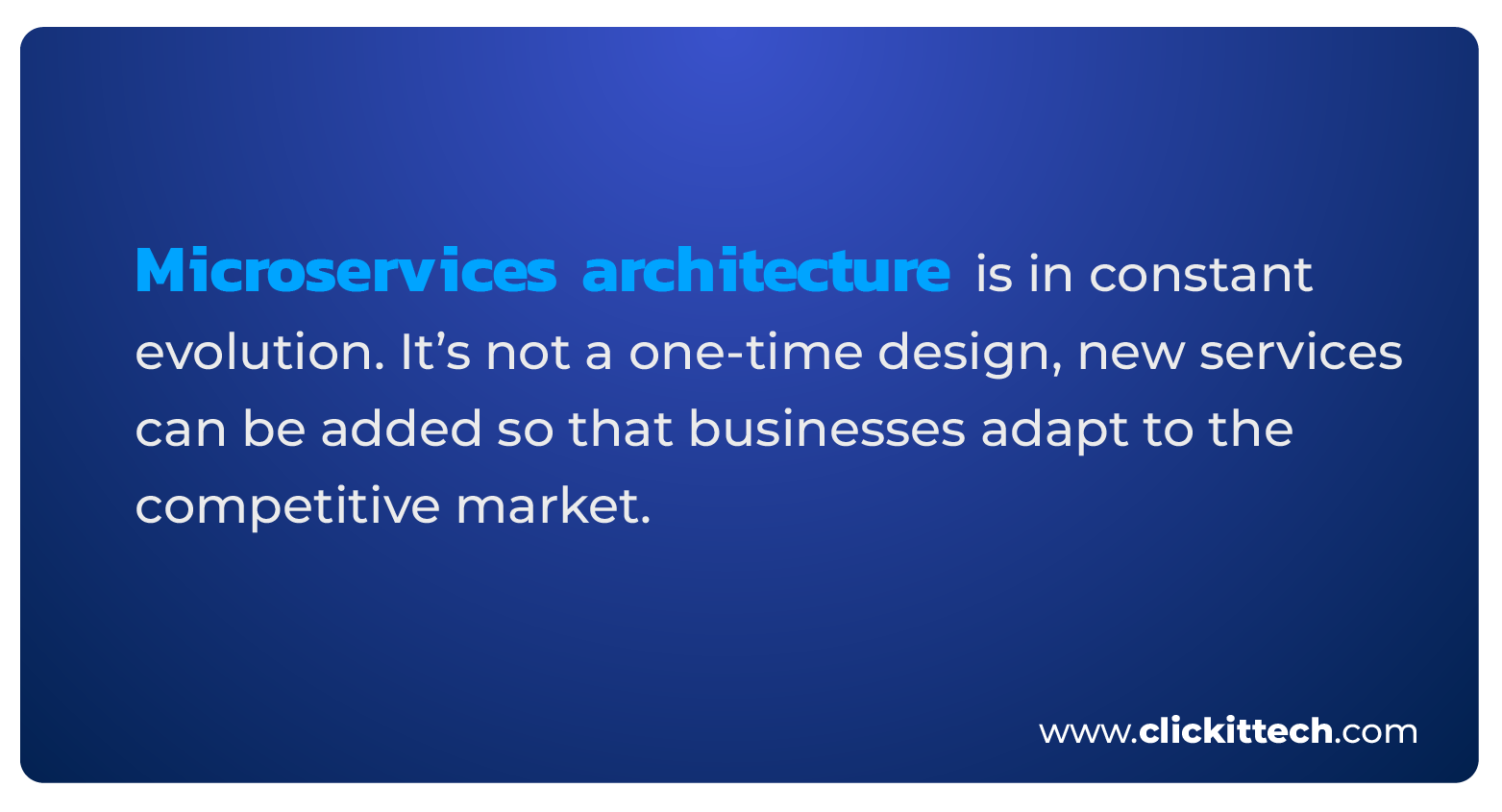
Microservices Benefits: Wrapping Up
Modern and complex applications are diving into the Microservices world to gain a competitive edge in today’s market.
Applications that are in constant growth and change benefit significantly from this architecture, as it eases scalability and modifications because you can alter one microservice without affecting the whole infrastructure. This accelerates deployment and time-to-market, maintaining availability.
Microservices´ tech-agnostic approach also gives more independence and autonomy to developers as they get to use the tech stack that better suits their expertise, and different teams can contribute to the infrastructure by working on specific microservices, ensuring that they will still collaborate seamlessly.
Overall, microservices benefits can help build agile, scalable, and reliable applications while helping developers’ workflow. Implementing this architecture into complex applications that handle a lot of data like streaming, e-commerce, healthcare, or financial platforms will give the organizations astounding results.
The right first step before enjoying the Microservices benefits is finding the ideal resources and a professional team that matches your priorities. ClickIT works with expert DevOps LATAM engineers who will help your digital business grow.

Microservices Benefits FAQs
Microservices architecture benefits are great for complex applications that need to integrate with third-party services and handle great amounts of data.
Choosing Microservices will depend on your project’s specifications and your team’s resources.
Microservices give the ability to scale individual services with flexibility, isolating any possible failures so that it doesn’t affect the entire application. Changes can be made quicker, so another benefit is faster deployment. You can also use any technology available thanks to its tech-agnostic approach.
Overall, Microservices increase the agility, productivity, and independence of dev teams while protecting the security and compliance of systems.
The major challenge organizations face when adopting microservices is the lack of resources, team members, and skills to manage the evolving nature of this architecture. Another challenge would be the migration process from a monolithic environment, as it takes up considerable resources.
Also, it is necessary for teams to take into account data integrity, consistency, management, and security to ensure a successful microservices architecture.
DevOps and Microservices complement each other. Combining these two approaches promotes agile software development. This sets a workflow that prioritizes automation and independence, which results in faster delivery of reliable and scalable applications.

